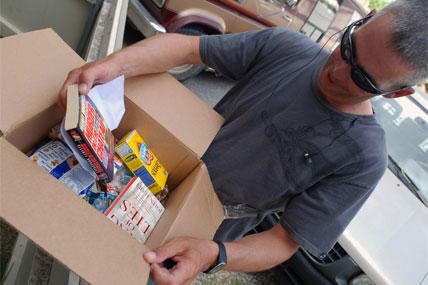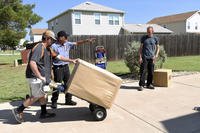Anyone who has deployed to the Middle East knows that sending chocolate is usually an exercise in futility. It melts, quickly.
While a chocolate Easter bunny missing his ears is just a quality issue, there are safety concerns when mailing food overseas.
First, if the product you’re sending needs to be refrigerated or was purchased from the refrigerated section, don’t mail it. No amount of packaging or vacuum sealing will protect that food from deteriorating or growing bacteria, say representatives at the USDA food safety hotline (1-888-674-6854 or www.fsis.usda.gov).
Home vacuum-sealing machines, in fact, are meant to remove air from around the food to protect it from freezer burn, dirt and insects. The process is not a replacement for refrigeration.
In the extreme heat of the Mideast, even some home-baked goods that don’t require refrigeration will falter on the trip.
Sue Spitler, food consultant and co-author of the book, “Troop Treats: How to Make, Package and Ship 100 Non-Perishable Treats to Friends and Relatives in the Persian Gulf,” spent two weeks with her staff testing recipes, packing up the goodies and then tucking them into 150-degree ovens for several days to test their vulnerability to extreme travel conditions.
At high temperatures, she says, if a food contains moisture, the moisture creates steam, and the steam creates mold, which causes the food to spoil. In other instances, dry or crisp foods, like cookies, will continue to bake in the heat and may become brick-like.
After some experimentation, military wives have techniques that will get home-baked goods to the front, intact.
Heather and several other wives suggest baking cake, muffins and corn bread, in a jar, which, once sealed, will travel for several weeks and still be fresh and moist upon arrival.
“The first time I sent one, he was amazed,” Heather says. “It took two weeks to get there, and it still tasted good.”
To make the cakes, purchase wide-mouthed, pint-size canning jars. Boil a large pot of water, sterilize the jars and lids. Next, grease the jars with Crisco and flour.
Mix up a store-bought cake mix, and pour one cup of mix into each jar. One box of mix makes four jars. Put the jars on a cookie sheet, and stick the sheet in the oven. Begin checking the cakes after the minimum bake time as baking times may vary.
Once finished, remove the jars from the oven and, while the jars are still hot, lay the lids on top of the jar. As the jar cools, a seal will form between the lid and the jar, preserving the cake inside. Once cool, screw the rings on the lid, wrap each jar in bubble wrap and mail.
Related: Care Package Surprise: Cake in a Jar
“My daughter thinks they’re amazing,” Heather says. “I had to take one to work, because they didn’t believe me.”
A trick for sending brownies is to bake the mix in a disposable pan and under-bake the concoction by five minutes. Heather says her mother-in-law does this and then wraps the entire pan, once cool, in saran wrap. The brownies finish baking in the heat on the trip and have always arrived fresh and edible.
Keep Up with the Ins and Outs of Military Life
For the latest military news and tips on military family benefits and more, subscribe to Military.com and have the information you need delivered directly to your inbox.





















